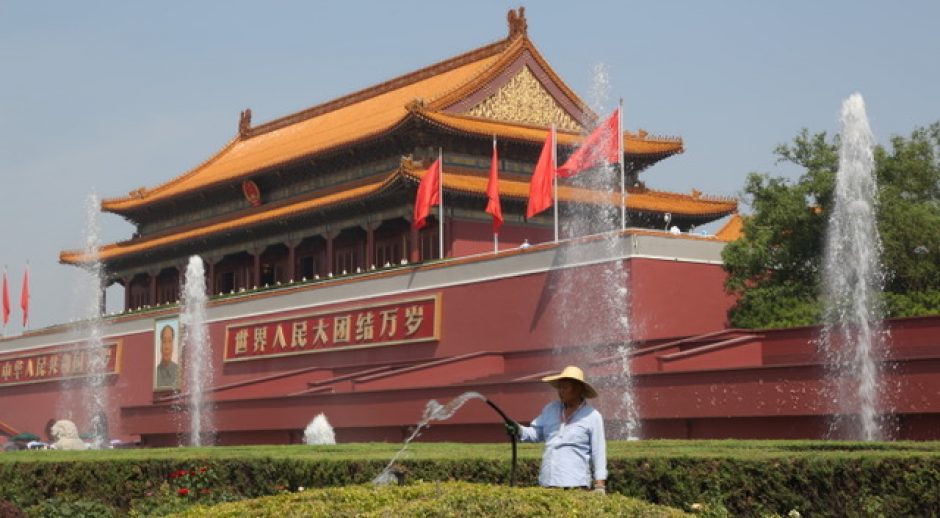“Asian Calligraphy, 268” gave me a newfound appreciation for the development of Chinese characters, their meaning, and the art of writing them. According to a Chinese legend, characters were developed by the half-god, half-human figure, Cang Jie, who lived 4, 000 years ago and was able crack Heaven’s codes, interpreting natural signs to draw the characters. For example, the character for mountain, 山 – “shan,” which in the early years of character formation was a pictograph of a mountain range, the more modern character for 山 still bears resemblance to its original pictographic form. Calligraphy 268 gave me a fuller sense of the importance of language, in this context, the characters in Chinese history and culture. It is a core component of the national taste, affects all Chinese people, and one’s calligraphy measures his or her cultural attainment, personality, and discipline.*
Below, are photographs of my calligraphy portfolio from this course.
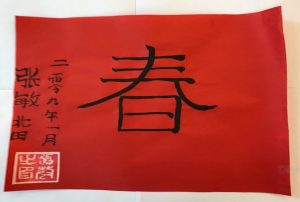
春, chun, “spring” – a Chinese New Year couplet.
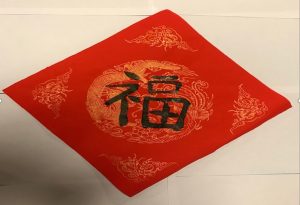
福, fu, “blessing” – a Chinese New Year couplet.
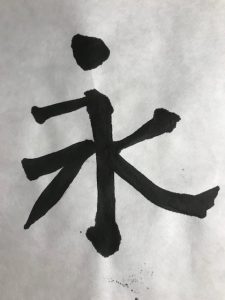
永, yong, “eternity” – the one Chinese character that uses all eight major strokes.
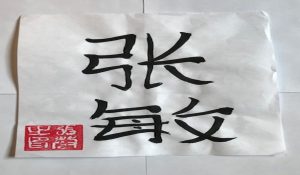
张敏, zhang min, zhang – “archer”; min – “quick or cleaver,” 张敏 has been my Chinese name since I first started studying Chinese in 9th grade.
* Li, Wendan, Chinese Writing and Calligraphy. University of Hawai’i Press, 2009.
